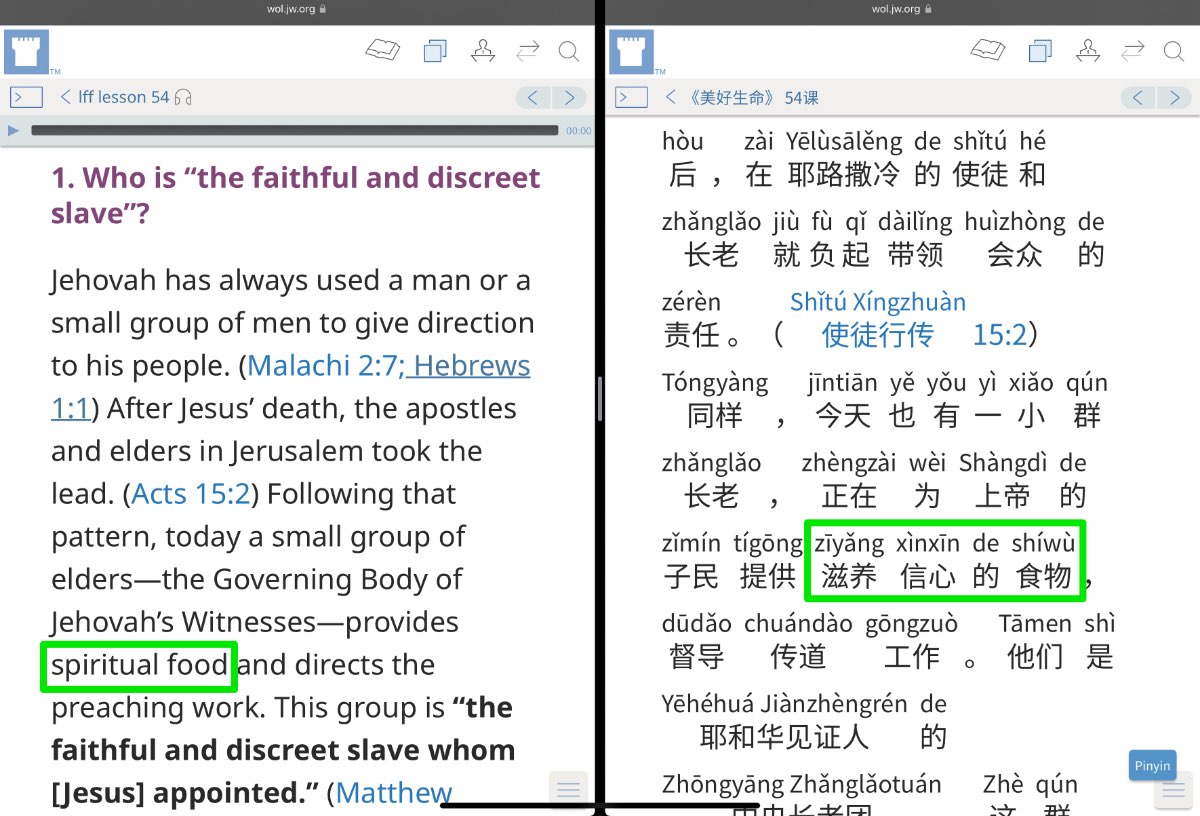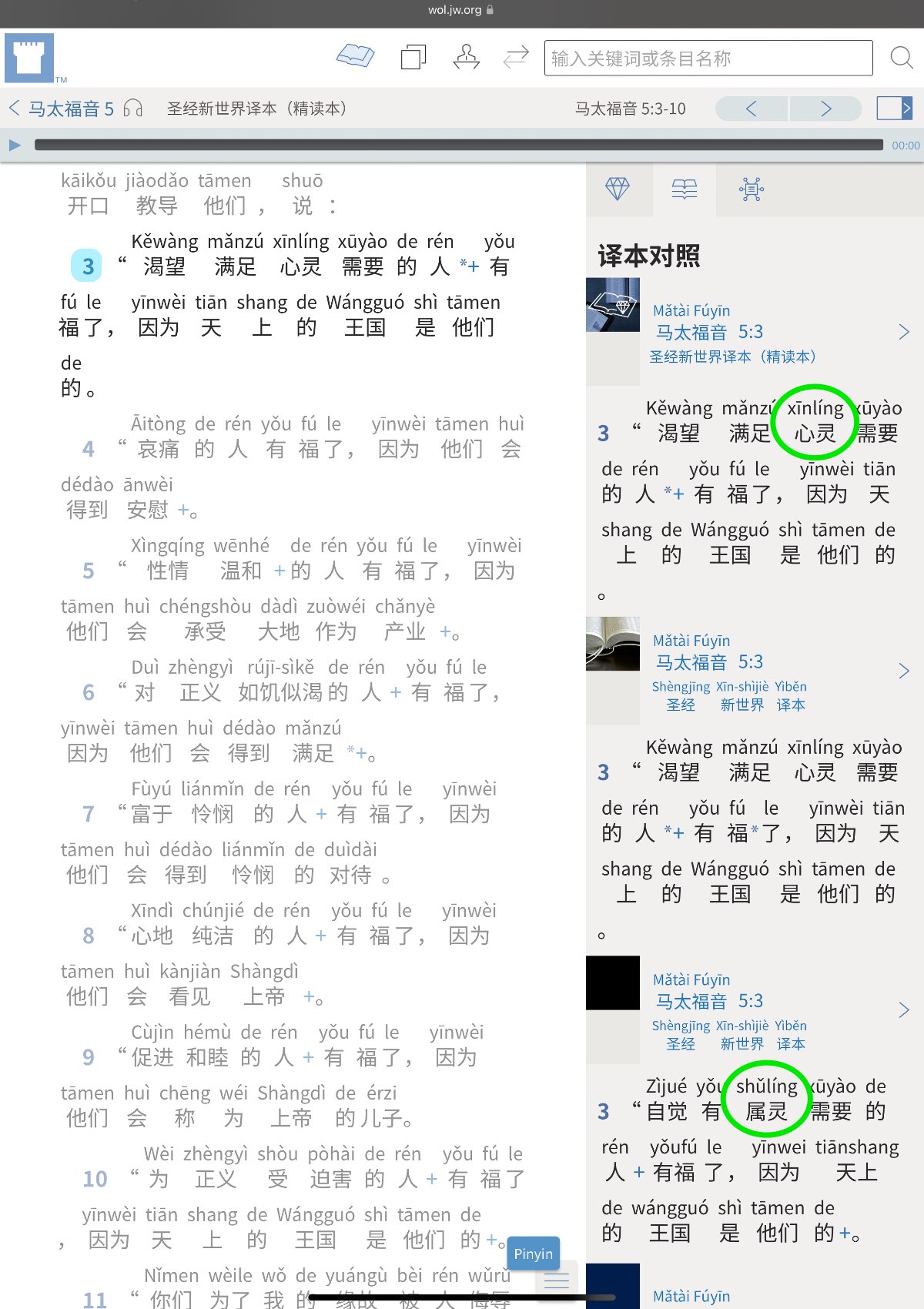zīyǎng (zī·yǎng grow · support → [nourish] 滋养 滋養) ← Tap/click to show/hide the “flashcard”
With last week’s MEotW being “xīnlíng (xīn·líng heart · spirit [→ [spiritual]] 心灵 心靈)”, which the organization is now using as a more understandable translation for “spiritual” compared to “shǔlíng (shǔ·líng {(in the) category (of)} · spirit → [spiritual (nwtsty-CHS Appx. A2 notes change from “shǔlíng” to “xīnlíng”, etc.)] 属灵 屬靈)”, one may wonder how the organization now chooses to translate “spiritual food”, which before was translated as “shǔlíng (shǔ·líng {(in the) category (of)} · spirit → [spiritual (nwtsty-CHS Appx. A2 notes change from “shǔlíng” to “xīnlíng”, etc.)] 属灵 屬靈) shíwù (shí·wù eating · matter → [food] 食物)” or “língliáng (líng·liáng spirit · {grain → [food]} → [spiritual food (old translation, no longer used in nwt-CHS)] 灵粮 靈糧)”.
A bit of digging reveals that the organization now seems to mainly translate “spiritual food” as “zīyǎng (zī·yǎng grows · supports → [nourishes] 滋养 滋養) xìnxīn (xìn·xīn believing · heart → [faith] 信心) de (’s 的) shíwù (shí·wù eating · matter → [food] 食物)”.
For example, that is how “spiritual food” is translated in Lesson 54 of the Enjoy Life Forever! book, which is now the main publication officially recommended for use on Bible studies. We can see this when we compare the English and the Mandarin versions of this Lesson:

The translation “zīyǎng (zī·yǎng grows · supports → [nourishes] 滋养 滋養) xìnxīn (xìn·xīn believing · heart → [faith] 信心) de (’s 的) shíwù (shí·wù eating · matter → [food] 食物)” is also used in these recent issues of The Watchtower:
(The Watchtower ONLINE LIBRARY’s Synchronization feature can be used to quickly change the language of the currently loaded material, or you may want to open two separate browser windows to see the same material in two different languages side by side.)
Alternately…
Interestingly, “spiritual food” is sometimes now translated in other ways as well. For example, “mǎnzú (mǎn·zú fills · {to be sufficient} → [satisfies] 满足 滿足) xīnlíng (xīn·líng heart · spirit → [spiritual] 心灵 心靈) xūyào ({(things) needed} 需要) de (’s 的) ‘shíwù (shí·wù eating · matter → [food] 食物)’ ” is used in the following issue of The Watchtower:
Also, the current version of the Mandarin New World Translation Bible (nwtsty) uses the expression “Shàngdì (Shàng·dì Above’s · God → [God] 上帝) cìxia (cì·xia gives · down 赐下 賜下) de (’s 的) shíwù (shí·wù eating · matter → [food] 食物)” to translate “spiritual food” at 1 Corinthians 10:3.

